Undying Flower review
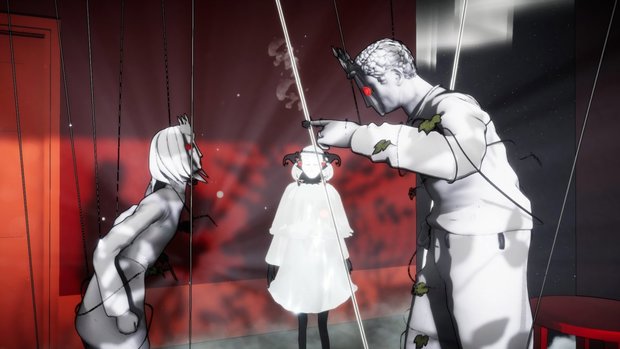
- 0 Comments
Surreal narrative exploration of trauma looks stunning but grows increasingly disjointed through abstraction
I really love the subgenre of adventure game known as walking simulators, from what is arguably the first full iteration of the idea – The Chinese Room’s Dear Esther – to the more walking-sim-adjacent releases of recent years. Part of what attracts me so much to them is the interactive narrative, rather than a focus on puzzles or action sequences of other games. To me they are more like experiencing a world, albeit slowly, which unfolds linearly with an emphasis on exploration and environmental storytelling. Often the topics in these games are heavier and emotional, which deserve a slower and more cautious exploration and wouldn’t benefit from the addition of unnecessary player obstacles.
Undying Flower is just such a game, predominantly a walking simulator but with stylish elements reminiscent of a visual novel in between. It’s a dark, surreal narrative-driven adventure from Indonesian studio Calcatz that delivers a strange, deep and moving tale of a woman seeking absolution from the regret she feels after a traumatic event. Sadly, I came away from this game wanting much more from it. The premise is great, and fans of surreal storytelling will likely enjoy certain aspects of it, especially the way the art style effectively switches intermittently from dream-like to nightmarish. However, it’s often too abstract for its own good, and a lacklustre plot lacking real dramatic impact left me continually waiting for the game to truly bloom.
We begin our journey (after a warranted photosensitivity warning) in what looks to be a forest-cum-graveyard hellscape. Swathes of red fill the screen as we advance the visible character closer and closer to an illuminated figure in the distance. Turning the camera on ourselves, we see a young teenager dressed in blue, her face covered by her arm as if shielding it from the elements. As opening sequences go, I was impressed by this, and as we laboriously trudge toward our goal, it feels both ceremonial and foreboding. Large white phrases begin appearing on-screen, accompanied by a quiet but haunting vocal track, echoing what we are seeing. When we finally reach our destination, the words ‘Forgive yourself’ hang in a fade-to-black sequence.
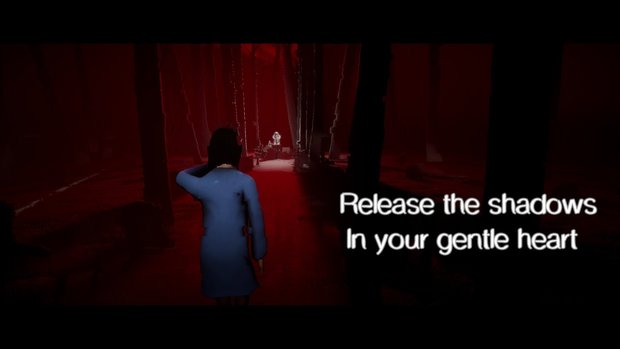
Suddenly the forest teen is gone and we’re looking directly at one of the main characters in this game, whose name is not given right away. It looks to be another young woman, crouched down in sadness and shame, her whole face covered by a mask with a black crown on top. The figure is all in white, save for two pops of red from the flowers that adorn either side of her mask. She asks, ‘Would you forgive me if I killed someone?’ Our only two dialogue options are, rather tellingly, ‘No’ and ‘I don’t know you.’ This initial dialogue is very stylish; the masked woman’s words flash up on the screen against a black background before dropping back to the dialogue display as if written normally in the flow of the conversation. We are then asked, ‘Do you hate yourself?’ This is left as a ‘thinking moment,’ however, and the scene is over.
Apparently, that was all a dream – one that our player character has been having more and more frequently and vividly. The next scene opens with a still-young but fully grown woman (whom I interpreted to be the adult version of the teenager from the intro) sitting by the bedside of a child and texting her father. The texts reveal that the child is a test subject for experimentation, which, if successful, will allow us to ‘erase our sin.’ The child is Subject X02: The Flower, who is barely alive, and we are Nala, a scientist. As we push the child in a wheelchair down a long corridor towards a lab, the environment is angular and disjointed, and Nala’s thoughts are seemingly broadcast on the walls, cumulating in a final bold statement: ‘I killed my grandfather.’ Nala can’t remember how or why, only that she is sure that she did and laments the gap in her memory. Of course, in true horror game style, the experiment inevitably goes wrong. The computer tells us the memory stream has failed, and boom – we’re back with the masked girl in white from our dream.
What follows is an unusual sci-fi story of The Flower serving as a host for imprinted memories from Nala’s past in a series of highly stylized flashbacks leading up to her most traumatic experience – one we can supposedly change the ending to. We do this by working through surrealist depictions of scenes from Nala’s life and interacting with various objects there. The Flower says this will help Nala understand the events prior to her grandfather’s death, and by changing something small we can ultimately change the future – sort of a ‘butterfly effect’ mechanic – which will in turn erase our regret.
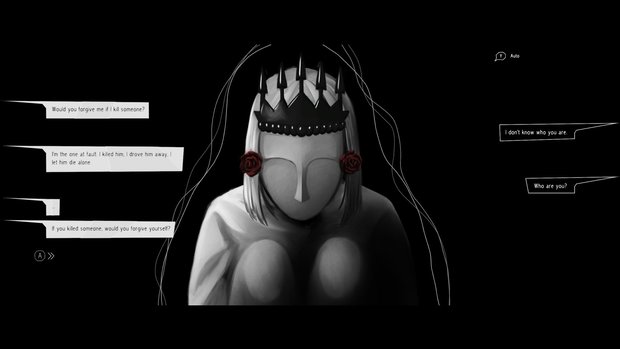
It works like this: present-day Nala is placed in a small frozen vignette representing a scene from her past, which has been imprinted on The Flower, who is also there looking on. The Flower offers a bit of information of what exactly we are looking at (for example, masked statues of younger Nala in a heated argument with her grandfather) and then adult Nala can interact with a relevant item in the room. Upon doing so, a dialogue screen appears in which we can choose either younger Nala (with The Flower representing her) or Grandfather (similarly masked) to get their perspectives (shown as ‘Her story’ or ‘His story’) on it. Present-day Nala drives these conversations with questions, acting as an impartial investigator. The Flower recounts Nala’s memory of how that item holds significance in the overall story, and then Grandfather does the same. Afterward, Nala comes to an understanding of how differently events were seen by each party, and experiences a revelation.
Unfortunately, we can only examine a few things throughout the various scenes, and any interaction with the masked characters feels a touch underwhelming and banal. With two different perspectives for each, it mostly ends up feeling like a mini lore dump. For example, upon interacting with a boombox, the Nala memory imprint becomes an angry, stereotypical grumpy teenager with more than a touch of emo, but Grandfather’s avatar reveals very little in expressing his own personal views. This is where things fall apart for me, as we’re given the character of Grandfather but never learn very much about him. We aren’t privy to the real depth (or not) of his bond with Nala, and some significant plot points are skirted over, such as the location of Nala’s parents and the death of her grandmother.
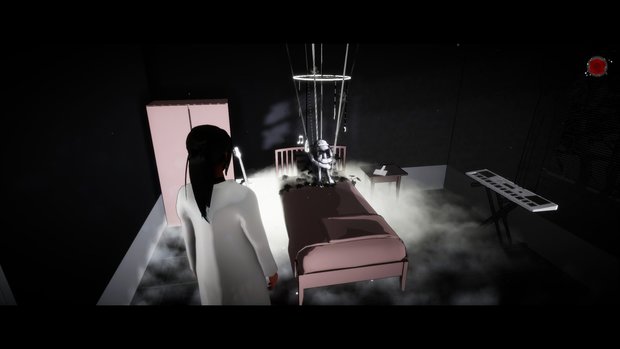
Even in what should be deeply emotional scenes, Grandfather, for all intents and purposes, is a very one-dimensional character. In another memory, Nala reflects on her family by looking at a family photo. Grandfather is wearing what looks to be a military cap in the picture, and after learning that Nala’s parents disappeared due to ‘work,’ my ears pricked up. Were we about to add another desperately needed character layer to Grandfather? The answer was unfortunately, no. Of course, these scenes reflect only young Nala’s memory of her grandfather, and she may not have been fully cognisant of the family situation, but the game never makes any attempt to address this limitation.
This pattern continues throughout the other memory imprints – angry Nala, vanilla Grandfather – which left me feeling detached from the interpersonal dynamics and family trauma being presented. Undying Flower tries to build up to a grand reveal, but with the lack of character depth to make me care about them and their relationship, I felt the tension ebb away rapidly. When the actual reason for why Grandfather’s demise was uncovered, I felt completely underwhelmed. Some of the traumas Nala faced as a young child were understandably painful for her, but as an observer the emotional punches were simply not there for me.
It doesn’t help that there’s no voice acting in the game, apart from one cutscene, and even then it’s only Nala. None of the other cinematics or even the ending itself is voiced. And that’s too bad, as this one scene is dramatic and heartbreaking; it’s mostly crying but under the circumstances it works well here. There’s no extended monologing or speech, just one woman struggling with what she’s seeing, alternating between despair and panic. It certainly feels impactful, which is why I would have liked to see other voices pop up along the way.
Along with how the characters are written, another reason for my disappointment is that Undying Flower’s style ultimately trumps its substance. The pace is slow, (and I mean slooooooooow) with Nala moving like she’s navigating tar. That can be par for the course in an emotionally challenging walking sim, but I found myself mentally willing the slow fades between scenes to be less sluggish and the dialogue a bit snappier. Especially since the story’s poignancy wasn’t hitting me as hard as intended, these parts felt slightly punishing to plod through.
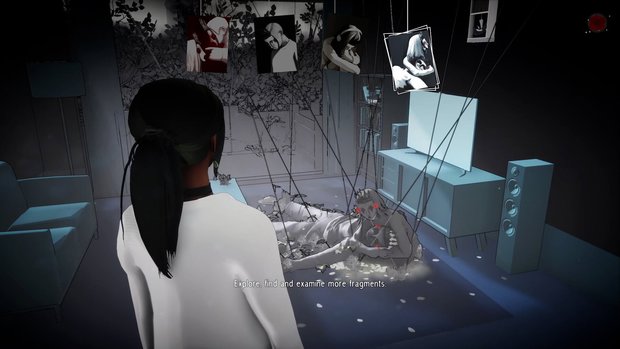
That being said, it certainly is stylish. There were a couple of very dramatic set pieces and I was really taken by the game’s artistic direction – the real star of the show. Between the light exploratory scenes, the visual novel-styled dialogue sequences with the masked characters are simple but very powerful. Distorted thin, colourful lines move aggressively around the masked figures, contrasting the mostly black and white facial coverings. The masks initially reminded me of old-style playing cards, with the bright red lipstick of the Queen and the strong dark eye lines of the King. After doing a little research, however, I learned that these masks represent a dramatic Indonesian style of dance called Topeng, in which various emotions are conveyed through the masks worn. I’m always impressed when I see something implemented that feels personal to the creators and their unique backgrounds.
Most of Undying Flower has an extremely interesting ‘operatic’ feel: the memory characters are static and their bodies are held up by strings like marionettes. I thought this was a very neat touch, as if we were viewing a performance art diorama. Use of colour in these scenes is also limited to a mix of mainly black and white with red accents. However, the character models in the unmasked parts while investigating a scene feel reminiscent of twenty-year-old graphics. This doesn’t necessarily take away from the overall theme or mood, but the scenes with the masked figures are far more appealing and stand out far more.
Much like the opening sequence, a few segments involve walking through seemingly endless voids, a stark reminder of the fact that we are in a failed experiment, occupying an unknown space and time. These parts are beautifully crafted: As Nala trudges forward toward the next new dramatic reveal, the camera perspective changes around her, providing an elevated artistic flair to what would otherwise have been quite standard walking sim fare. Another thing I found really eye-catching is the use of certain words sporadically popping up during the dialogue scenes, which took me by surprise and added to the overall unique aesthetic. It was particularly unnerving after reading The Flower’s account of her family leaving her to see a bold ‘Haha’ complete with smiley emoji flash up on-screen, as well as other larger, full-screen displays such as ‘Why’ and ‘Help’ scattered intermittently throughout the game.
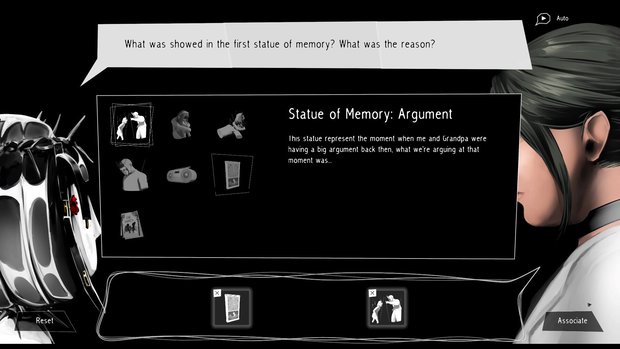
In terms of actual gameplay, Undying Flower is quite limited. Other than picking up the few items we’re allowed, there’s only one other type of ‘puzzle’ in the form of a summary quiz. In it, The Flower asks us to recap what we’ve seen in various memories. However, some of the options available and the way the questions are asked don’t feel cohesive. When The Flower asks ‘what happened in the first memory?’ I dutifully chose the option I felt best described the child Nala crying in bed, but I was wrong. It turns out The Flower was asking about the first memory in a strictly chronological sense, but considering we were first dumped into a memory further along, this wasn’t made clear. A few other instances of what exactly The Flower needed me to input had me a little stumped as well. Fortunately there is no penalty for getting it wrong; the game just clears your inputs and lets you try again. While I understand not wanting artificial obstacles getting in the way of the story, I really think a few more puzzles could have worked well here, because the gameplay loop began to feel repetitive.
The music is a bit of a mixed bag too. We start our journey with a hauntingly beautiful hymn-like score, narrating our slow walk forwards towards the unknown, and throughout the game we are treated to a gorgeous, atmospheric and emotional soundtrack, heavy on the piano. The music feels mysterious and compelling and noticeably quieter in the dialogue parts, until we reach a theatrical moment where the music appropriately booms. Whenever we are traversing the space-like unknown, the accompaniment is incredibly ambient, with low hums and gentle waves of sound.
Surprisingly, about two-thirds of the way through we get various musical montages that caught me completely off guard, and there are three distinctly different cutscenes fairly close together, each with its own song. In the cutscenes, the vocals echo what we are seeing. Up until then, the game’s fitting, high-quality accompaniment had been solely instrumental, so this felt like an unusual choice to make. That’s not to say the songs, sung by one of Calcatz’s own development team, are bad, rather that some of the lyrics are very on the nose in directly echoing what’s happening. In the game’s closing cutscene, if you get the bad ending (like me) the song describes (in angry musical form) how badly you did, and again I felt as if it didn’t quite fit, feeling overly melodramatic. And so the musical arrangement overall, like the rest of Undying Flower, comes across like a mixture of ideas, which, although there are some real highlights, ends up seeming disjointed.
In terms of accessibility and gameplay options, there is a basic menu for adjusting the resolution, graphical quality and camera sensitivity, but nothing to change the size of subtitles, which are quite small. I played this game on the Steam Deck, which worked well. One thing I noticed is that the fans were running quite loudly even on a medium setting, though it didn’t cause any performance issues. Then again, even with its slow pace, Undying Flower has a very short run time. I clocked in at under two hours, though with two different endings (one ‘good’ and one ‘bad’) it could warrant a second playthrough. The game autosaves quite regularly so you can pop back into the game easily enough. Unfortunately, there is only one specific scene and dialogue prompt that lock the ending in place before the final checkpoint, so you’ll need to go back and replay from the beginning to get the alternate ending.
Final Verdict
Undying Flower is a surreal game, oftentimes confusing and somewhat lacking in emotional depth. But while the story may not be its strongest suit, the dramatic, high-quality art direction is certainly appealing while it lasts. To me this felt more like a ‘here’s what we can do’ debut from a new development team throwing all their skills into the mix and seeing what came out, with uneven results. Most of the artwork is extremely memorable and strong, but the slightly disarming musical montages and limited gameplay really do it no favours. I look forward to seeing what Calcatz go on to do, as I think the fundamentals of a great narrative game are present, but until the underwhelming substance is able to match the abundant style, there appears to be plenty of room left to grow.
Hot take
The short and overly surreal Undying Flower shows signs of what a talented group of designers can come up with artistically, but don’t go in expecting much in terms of gameplay, clear-cut storytelling or lasting emotional connection.
Pros
- Unique and memorable art with a distinctive puppet-like presentation
- Some beautiful music
- Interesting dialogue pop-up displays
Cons
- Strange story feels underwhelming and without much depth
- Limited gameplay opportunities make for a repetitive experience
Victoria played Undying Flower on PC via Steam Deck using a review code provided by the game's publisher.


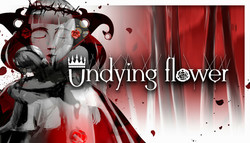


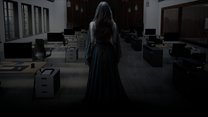





0 Comments
Want to join the discussion? Leave a comment as guest, sign in or register.
Leave a comment